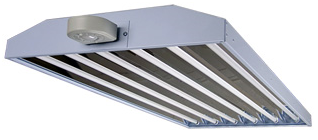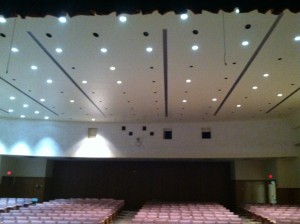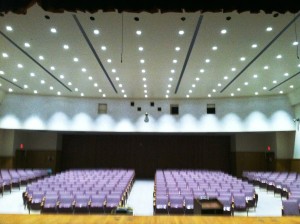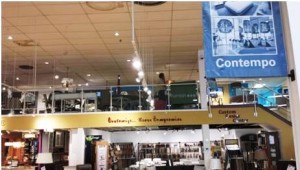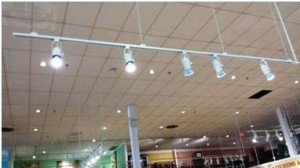Industry and Company News
Light Fixtures 101
Posted December 17th, 2013 by GreenTech Energy Services
Light fixtures, or “luminaires,” not only provide decorative housing for lamps, sockets and ballasts but also control the intensity and direction of light emitted by the lamp. This in turn directly impacts visual comfort, glare control, task visibility and light pollution. A wide range of lighting conditions can be achieved with variations in the design of a fixture.
One of the basic components of the luminaire is the light source, either a bulb or light-emitting diodes (LEDs), along with the holders or mounting boards to which they are attached. Bulbs come in a wide array of sizes, shapes, colors and types, including fluorescent, metal halide, high-pressure sodium, and incandescent. The other basic fixture component is the ballast/driver system that regulates the incoming electric current and protects the light source from voltage fluctuations.
Some fixtures also include reflectors, which capture some of the light emitted by the source and re-direct it outward, downward, or in any other direction where it is needed. They can be made of metallic or white material, with hammered or ridged surfaces. A good reflector generates uniform brightness and consistent color without glare.
Shielding components, such as lenses and louvers, are used to reduce glare and smooth out the light pattern. They may also be used to filter out heat or provide safeguards against breakage and vandalism. Lenses can be made out of glass, acrylic or polycarbonate. Prismatic lenses, which refract (bend or change the direction of) the light from the source, come in a wide variety of patterns that give the fixture different appearances and distribute light in different ways. Ideally, they hide the brightness of the lamp while still providing high energy efficiency. Another type of lens is the diffuser, which is white or frosted. It is effective at hiding the light source and diffusing the light uniformly but it does lower the fixture’s efficiency to a certain extent.
One other device that is becoming an increasingly common component of light fixtures is the integrated control. These controls are smaller and use less wiring than wall- or ceiling-mounted sensors, and they provide a more direct line of sight to the area below the fixture.
The most advanced luminaires are made with sustainable materials that enhance energy efficiency, provide better light distribution for the specific application, and are more durable and easy to maintain.
Excerpted from Advanced Lighting Guidelines (http://algonline.org/)
LED LIGHTS UP EXTERIOR OF PHILADELPHIA CITY HALL
Posted November 19th, 2013 by GreenTech Energy Services
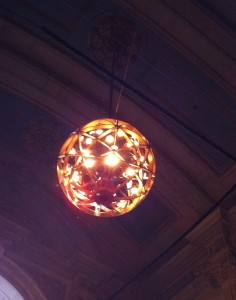 |
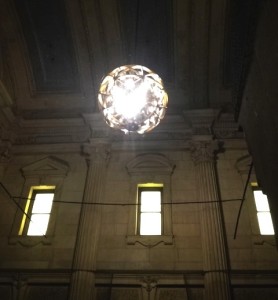 |
The City of Philadelphia recently contracted with Noresco, a national energy services company, to implement an energy efficiency project in its administrative buildings. GreenTech Energy Services was hired to do the lighting component of the project. This fall, GreenTech completed installation of the exterior lights at the Municipal Services Building and in the portals of City Hall, one of the largest municipal buildings in the world. Obsolete incandescent and metal halide lights were replaced with new LED technology, as detailed below:
- 90-watt floods were replaced with new 17-watt LED PAR 38’s.
- 350-watt metal halides were retrofit with 40-watt LED’s.
- 150-watt metal halide spot floods were replaced by new 45-watt LED floods.
- Several large decorative spheres containing nearly one hundred and fifty 90-watt incandescent lamps each were retrofit with 20-watt LED Par 38’s (see before and after photos above).
This phase of the retrofit achieved a number of goals. The new LED lights do a much better job of accenting the ornate architectural details in the portals of the building. Light levels throughout the area are higher and the light is a crisp white color that enhances aesthetics as well as safety and security.
In addition, LED lighting consumes a fraction of the energy that HID and incandescent lights do, allowing the city to shrink its carbon footprint and lower its utility costs. LED lights also have a much longer lifetime, which will significantly cut maintenance costs, particularly with regard to those fixtures that require scaffolding or lifts to reach.
Energy Efficiency Squared
Posted November 15th, 2013 by GreenTech Energy Services
GreenTech Energy Services is now working with EMC2 Development Company to provide our customers with the opportunity for an additional financial benefit for the energy improvements that they make. In addition to utility company rebates, grants, tax breaks and other incentives, our customers can now receive payments for the energy that will not be used as a result of energy efficiency improvements to their buildings.
This additional incentive is provided through a program established by PJM Interconnection, the market monitor that coordinates the movement of wholesale electricity through 13 states and the District of Columbia. EMC2 is permitted to participate in the program because it is a PJM Partner. Here’s how it works:
- GreenTech Energy Services works with EMC2 to see if a customer’s energy efficiency project meets the requirements for receiving this incentive.
- If a project qualifies, we calculate how much the saved energy, measured in kilowatts, is worth on the Energy Capacity Market. (See explanation of market below.)
- We send our customer a “Capacity Rewards Agreement” which states that EMC2 has their permission to bid the energy savings from the project into the Energy Capacity Market.
- After the customer signs and returns the agreement, EMC2 will bid the energy savings into the capacity market at auction and the customer is sent a portion of the proceeds.
This program is separate from utility rebates or state incentives for energy efficiency, and taking advantage of one does not preclude participation in the other. Together, these programs can improve the bottom line of energy efficiency projects, while promoting energy conservation.
How the capacity auction works: Each year, PJM holds a competitive auction to obtain sufficient electricity capacity where it is needed to reliably meet expected electricity demand three years into the future. Before each auction, PJM estimates peak electric usage for the entire region and provides bidders with this estimate. The auction works to ensure that there is enough capacity to meet that peak usage, plus a reserve margin. Bidders can bid in their existing power plants, new power plants, demand response, and energy efficiency. Their bid prices are based on the costs to have that resource available for that delivery year. In the auction, PJM stacks up the bids from lowest to highest in various grid zones. The price bid by the final resource that meets PJM’s target establishes the price paid to all resources in that zone. The capacity market serves to ensure that there are adequate resources to provide power to customers every day of the year.– Excerpt from PSE&G fact sheet
Hiking and Biking
Posted October 28th, 2013 by GreenTech Energy Services
 |
 |
Walking, running and biking for charity kept GreenTech staff members in shape this fall, and helped raise thousands of dollars for the American Cancer Society and the National Multiple Sclerosis Society.
Major Changes to Energy Standard Announced
Posted October 23rd, 2013 by GreenTech Energy Services
 The standard for energy efficiency in commercial buildings is the joint creation of two organizations: ASHRAE (the American Society of Heating, Refrigerating and Air-Conditioning Engineers) and IES (the Illuminating Engineering Society). The latest version of this standard, which is updated every few years, was released earlier this month. It sets much more stringent requirements for building envelope, lighting, mechanical and energy cost budgets.
The standard for energy efficiency in commercial buildings is the joint creation of two organizations: ASHRAE (the American Society of Heating, Refrigerating and Air-Conditioning Engineers) and IES (the Illuminating Engineering Society). The latest version of this standard, which is updated every few years, was released earlier this month. It sets much more stringent requirements for building envelope, lighting, mechanical and energy cost budgets.
The lighting standard focuses mainly on controls and daylighting. There are new space-by-space lighting power density limits (maximums for installed power over a defined area) and thresholds for top-lighting (bringing daylight into a space from the ceiling or roof). The goal is to achieve greater energy savings without impairing the quality of lighting for occupant satisfaction and comfort.
Better Buildings Meet the Challenge
Posted October 11th, 2013 by GreenTech Energy Services
 The Better Buildings Challenge was launched by President Obama with the goal of improving the efficiency of commercial, institutional and multi-family buildings and industrial plants by 20 percent or more over ten years. Organizations that have agreed to meet the challenge must conduct an energy efficiency assessment of their building portfolio, pledge an organization-wide energy savings goal, implement a plan to achieve those savings, and showcase at least one project to share the results of their efforts.
The Better Buildings Challenge was launched by President Obama with the goal of improving the efficiency of commercial, institutional and multi-family buildings and industrial plants by 20 percent or more over ten years. Organizations that have agreed to meet the challenge must conduct an energy efficiency assessment of their building portfolio, pledge an organization-wide energy savings goal, implement a plan to achieve those savings, and showcase at least one project to share the results of their efforts.
More than 120 organizations have committed to becoming Partners of the Better Buildings Challenge, including state agencies and municipalities, educational institutions, and corporations in various commercial markets, such as retail, hospitality, commercial real estate, and healthcare. Manufacturing firms participate through the Better Buildings, Better Plants Challenge, which is the industrial component of the program. Some of these firms were awarded recognition at the World Energy Engineering Conference in Washington last month. Data from the Department of Energy indicates that many facilities can save 15% or more annually through projects with paybacks of less than three years.
NIGHT SKY NOW VISIBLE OVER LOS ANGELES!
Posted September 26th, 2013 by GreenTech Energy Services
Between 2008 and 2013, energy usage by the City of Los Angeles dropped from 190 million kW a year to 110 million kW, and energy costs dropped from $16 million to $8.8 million. At a time when utility costs continue to rise, this is an astounding change, and it’s all due to the replacement of obsolete street lighting with LED technology.
LA’s Bureau of Street Lighting launched this four-year retrofit of 140,000 lights in 2009. A design based on thorough product testing was key to its success. Of the 244 LED units that requested evaluation, 84 met minimum requirements, 72 were actually installed at the site to be tested, and 20 were approved. The city performed eight cycles of six-month tests, evaluating for such factors as illumination, luminance, uniformity ratio, color temperature, brightness, power consumption, power factor, harmonic distortion, remote dimming/controls, and ease of installation.
Interestingly enough, the economics of LED retrofits improved during the course of the project. From 2009 to 2012, the average price of an LED fixture went from $432 to $245, the warranty went from 5 to 7 years, and its life went from 80,000 hours to 150,000 hours. The longer life means lower maintenance costs, in addition to all these other benefits:
- Directional light source, dimmable, with improved uniformity
- Reduced light pollution
- House side shields
- Small size, lightweight
- Minimal end of life landfill waste, no mercury
- Instant on, no warm-up period.
- White light, improved color rendering (helping to curtail burglaries, car theft and other street crime)
This last point is amply illustrated by the following before-and-after photos that were shown in a webinar recently presented by the Los Angeles Bureau of Street Lighting.
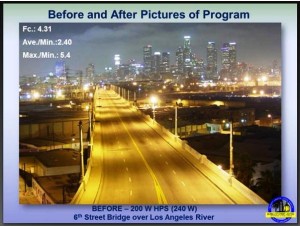 |
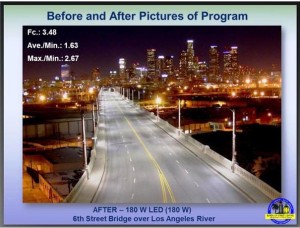 |
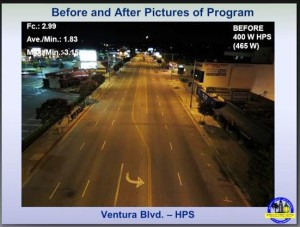 |
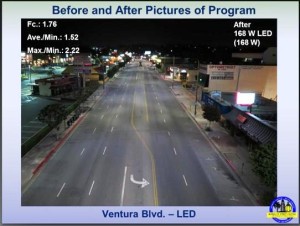 |
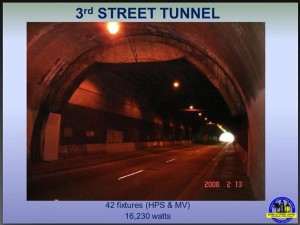 |
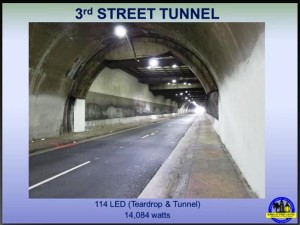 |
Auditorium Lighting: Another LED Success Story
Posted September 20th, 2013 by GreenTech Energy Services
As part of an energy efficiency project at the Upper Dauphin School District, GreenTech Energy Services retrofit the lights in the high school auditorium. In the main room, 150-watt metal halide high bays were retrofit with 30-watt LED high hats. In the back of the auditorium and a side room, fixtures with 100-watt incandescent lamps were re-lamped with 11-watt LED screw-ins. The new LEDs have enhanced the appearance of the auditorium – even the color of the seats seems brighter. They also improved light levels, significantly cut energy consumption, and eliminated obsolete technology that is costly to maintain.
LED TAKES THE SPOTLIGHT IN DIRECTIONAL LIGHTING
Posted September 12th, 2013 by GreenTech Energy Services
One way to categorize lamps is by the direction in which they give off light. “Point” lamps give off light equally in all directions. A good example is the traditional incandescent light bulb. “Directional” lights emit parallel light, all of it traveling through a space in the same direction.
Directional lamps are a key component of the lighting systems used in retail, hotels, restaurants, museums – anywhere that a discrete item or space needs to be illuminated. They come in different shapes and sizes suited to a variety of applications.
- Parabolic aluminized reflector (PAR) lamps are used in track, recessed and outdoor spot and floodlights. Like all bulbs, they are identified by their diameter in eighths of an inch (PAR30, 38, 56, etc.). They have a hard glass cover sealed to the reflecting surface, which is made of aluminized glass.
- Multifaceted reflector (MR) lamps are so named because the inside surface is composed of numerous glass facets covered by a reflective coating. Small and flexible, MR lamps provide good beam control and are quickly becoming the standard in galleries, museums, restaurants, and retails, usually as track lighting and recessed downlights. The most common MR lamp is the MR16, which has a diameter of 16 eighths of an inch (two inches).
- BR bulbs have a bulged reflector that can be clear, frosted, or even patterned. That frosting, together with the fact that they produce a softer-edged beam and less shadow than PAR lamps, gives them a desirable appearance for indoor applications.
Increasingly, halogen directional lamps are being replaced with LED’s. The Department of Energy’s research on directional LED lamps has revealed that they:
- Can achieve energy savings of 75 percent or higher
- Have a high CRI, between 80 and 85
- Typically deliver lower lumen outputs and involve higher upfront costs than halogens, but theoretically have a longer useful lifetime (they are still in the process of being tested for that)
- Radiate less ultraviolet and infrared energy (valuable in museums where UV and IR can degrade items on display)
- Have traditionally offered a limited range of distributions (unlike halogens, which range from narrow pin spots to wide floods), although new products are constantly coming on the market.
- Need to be installed in a way that allows for removal of heat away from lamps, or they become discolored and suffer shortened life expectancy and decreased lumen output. This is more challenging in a closed environment, such as track heads.
- Might be a different size or shape than halogen lamps they are replacing, making it difficult to fit into existing track head.
These issues indicate that a simple retrofit from halogen to LED might not be so simple. But if this is a project you’ve been considering, our lighting engineers can provide guidance. Click here to get in touch with them.
On the Road Again
Posted August 14th, 2013 by GreenTech Energy Services
 GreenTech is gearing up for the fall tradeshow season! One of our first stops will be the Pennsylvania Energy Services Coalition Workshop and Tradeshow on Sept. 19 at the Blair County Convention Center in Altoona, PA. A week later, we will be staffing booth #18 at the Pennsylvania Association of School Business Officials Facilities Management Conference in Harrisburg. From there, we will be heading to the Middle Atlantic Parking Association Fall Conference at the University of Baltimore on Oct. 23. And speaking of parking, GreenTech completed a lighting retrofit for Allentown Parking Authority that was written up in LEDs Magazine this summer. Click here to see full article.
GreenTech is gearing up for the fall tradeshow season! One of our first stops will be the Pennsylvania Energy Services Coalition Workshop and Tradeshow on Sept. 19 at the Blair County Convention Center in Altoona, PA. A week later, we will be staffing booth #18 at the Pennsylvania Association of School Business Officials Facilities Management Conference in Harrisburg. From there, we will be heading to the Middle Atlantic Parking Association Fall Conference at the University of Baltimore on Oct. 23. And speaking of parking, GreenTech completed a lighting retrofit for Allentown Parking Authority that was written up in LEDs Magazine this summer. Click here to see full article.
GreenTech Energy Services
email@greentechenergy.com
Phone: 856-439-9400
122 East Kings Highway, Ste 503
Maple Shade, NJ 08052
